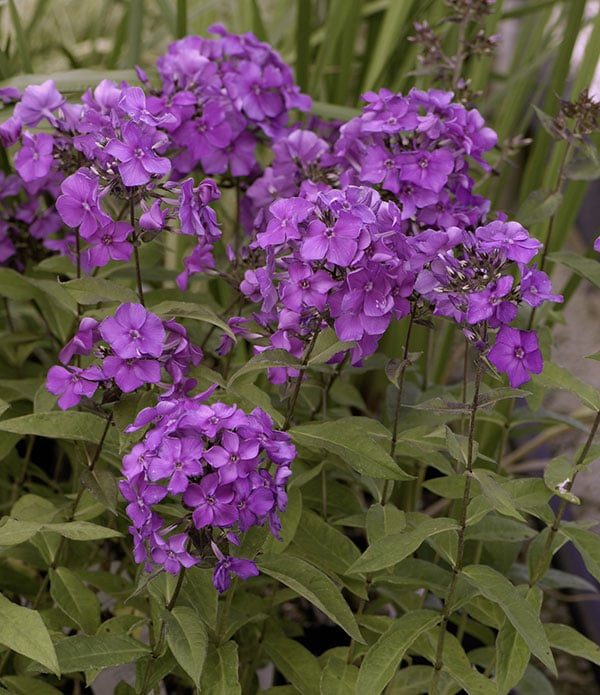
I’ve always got something to say about blue plants, and there’s happy satisfaction when I acquire another blue beauty for my small and growing collection. There was particular joy when I found a pot of ‘Blue Paradise’ summer phlox (Phlox paniculata ‘Blue Paradise’, Zone 5) this spring, now lavishly blooming in the sunny front bed. ‘Blue Paradise’ is one of the modern phlox cultivars bred for strong mildew resistance and generous blooms on a mid-size (24-inch/60-cm) clump. The large, scented flower clusters bloom from July through September. So, it’s beautiful, it’s scented, it blooms for 12 weeks — and it’s blue! What more could you want?
Perennials with blue petals can fool you. Often, they’re a shade of purple or a nuanced mauve overlaid with hints of blue, or even a murky mix of blue, purple and red. The horticultural industry labels these plants as blue, but we know better. They’re really purple leaning toward blue, and true blueness seems to be an elusive pigment in flower petals. But it’s not so simple as that, because flower petals never contain only one colour.
Flower pigments are divided into two main chemical groups. Carotenoids, expressed as carotene pigments, produce shades of yellow, orange and red. Flavonoids are expressed as anthocyanin pigments and produce red, purple, magenta and blue. Flowers contain a mixture of these pigments, and that causes their petals to appear as a blend, or suffusion, of colours. If a flower has a particularly high amount of one pigment, it will appear to be clear and recognizable, as with the deeply saturated blue petals of gentians. But that isn’t always a reliable indication of what pigments are at work in a petal. Blue cornflowers and red roses have the same chemical pigments, but pigments in the cornflowers are more complex, and bound to metal ions that cause them to suppress red and show blue. It’s an uneven and fluid balance of multiple pigments that produces petal colour.
Blue flowers can be tricky. There’s a subtle red shading in the eye of each tiny floret in the big ‘Blue Paradise’ flower clusters, the result of red pigment in the mix. Red has been mostly suppressed, and blue is prominent. But other factors, such as climate and ecological conditions, also influence colour. Light, air temperature and humidity at various times of day change the colour of ‘Blue Paradise’, making it rich purple in bright midday conditions, and deep blue in late afternoon and early evening. My eyes aren’t fooling me, but pigments are up to mischief.
However, I’m happy with any plant producing flowers that can be called blue, or anything close to blue. My small collection now includes ‘Blue Paradise’ phlox, willow gentian (Gentiana asclepiadea), giant blue lobelia (Lobelia siphilitica), Clematis durandii, ‘Black Knight’ butterfly bush (Buddleja davidii ‘Black Knight’) and Geranium ‘Rozanne’.
That’s six, and counting.









I purchased the “black and blue salvia” from the Hamilton RBG sale this year (and in the past), however, I also cannot recall its bot name. The sheaths of each individual floret are so dark as to be called black and each little flower along the stem emerges a clear, pure medium blue. A beautiful flower, however, I have trouble keeping it blooming. The plant grows fine but doesn’t put out much bloom. An annual also, by the way. Have never seen it in a garden centre.
Hi Judith…..I love the blue flowers too. Have you seen the Blue Salvia? I have one this year but the tag is gone now and I can’t remember the cultivar. It is a beautiful blue and is about 2-1/2 feet high….larger blossoms than other salvia.
where did you purchase the plant?
Strange, but maybe a case in point. On my screen, the phlox is decidedly purple – like a lilac type purple.
The blue of hydrangeas can be delicious.
Thanks for an informative article.
Yes, it may appear purple. If other readers have photos of blue phlox,please email us and we will add to Judith’s article.